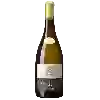
Cave de TainComte Tolosan Carmelle
This wine generally goes well with vegetarian, rich fish (salmon, tuna etc) or shellfish.
Food and wine pairings with Comte Tolosan Carmelle
Pairings that work perfectly with Comte Tolosan Carmelle
Original food and wine pairings with Comte Tolosan Carmelle
The Comte Tolosan Carmelle of Cave de Tain matches generally quite well with dishes of rich fish (salmon, tuna etc), shellfish or vegetarian such as recipes of salmon and avocado chirashi, pasta with scampi or quiche with leeks and fresh salmon from flo.
Details and technical informations about Cave de Tain's Comte Tolosan Carmelle.
Discover the grape variety: Merlot
Merlot is a red grape variety with small black berries that appeared at the end of the 18th century. It is produced in most of the Bordeaux terroirs, where it represents 58% of the planted area, and its best terroir is located in Pomerol and Saint-Emilion on cool, clay-limestone soils. At the mythical Château Pétrus, the wine is made with 95% Merlot, with a dark, dense colour, aromas of red and black fruits and a superb range of flavours, the Merlot transforms during its ageing to give way to notes of prunes, undergrowth and spices. On the palate, it is supple with distinguished tannins. It is often blended with Cabernet Sauvignon. Merlot is no longer exclusive to Bordeaux, it is nowadays vinified all over the world.
Last vintages of this wine
The best vintages of Comte Tolosan Carmelle from Cave de Tain are 2013
Informations about the Cave de Tain
The Cave de Tain is one of wineries to follow in Comté Tolosan.. It offers 219 wines for sale in the of Comté Tolosan to come and discover on site or to buy online.
The wine region of Comté Tolosan
Comte Tolosan is a PGI title that covers wines produced in a large area of Southwestern France. The PGI basin encompasses 12 administrative dePartments and is home to a wide range of appellations d'origine contrôlée (AOC) such as Jurançon, Cahors and Armagnac. The IGP label provides a geographical classification for wines that are not classified for AOC level appellations due to Grape variety or winemaking style. The region is part of the Aquitaine basin - the plains that lie between the Pyrenees, the Massif Central and the Atlantic Ocean to the west.
The word of the wine: Ampélographie
Study of the vine, and more particularly the grape varieties.














